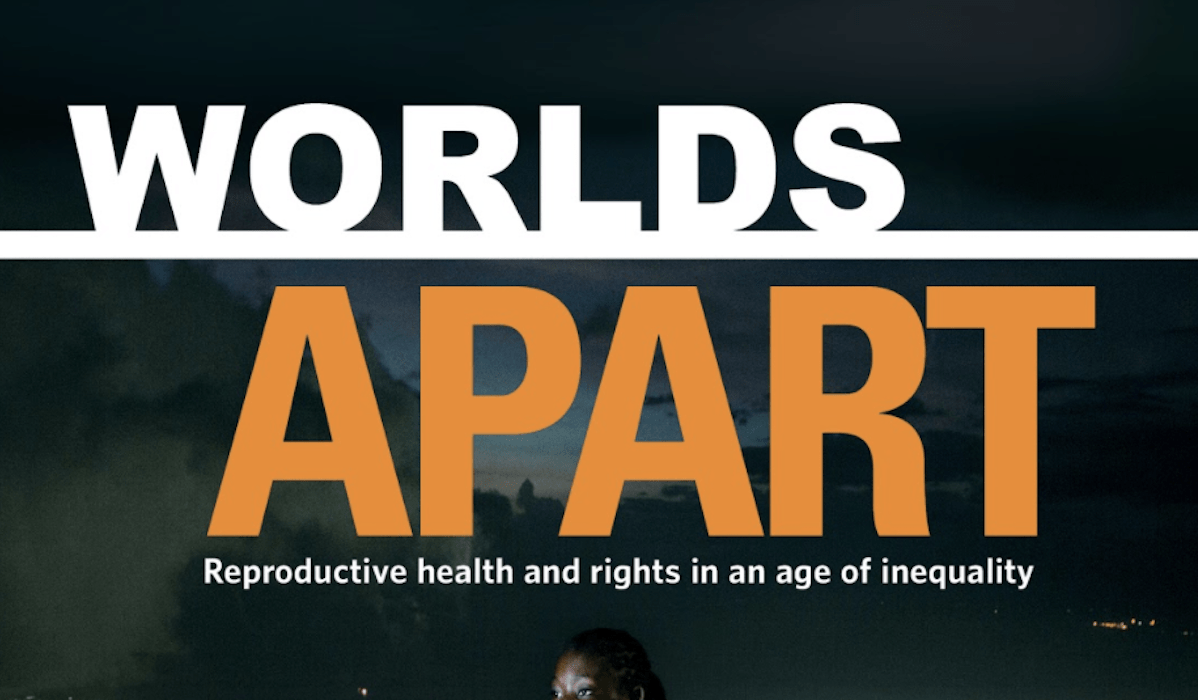Unchecked inequality, failure to protect the rights of poorest women could threaten unrest, undermine peace and world’s development goals, new UNFPA report warns
- Only about half of the world’s women hold paid jobs
- Globally, women earn 77 per cent of what men get
- Three in five women worldwide lack maternity leave, many pay “motherhood penalty”
Bangkok, 17 October 2017--Unless inequality is urgently tackled and the poorest women empowered to make their own decisions about their lives, including their sexual and reproductive health, countries in Asia-Pacific and globally could face unrest and threats to peace and to their development goals, according to The State of World Population 2017, published today by UNFPA, the United Nations Population Fund.
The costs of inequalities, including in sexual and reproductive health and rights, could extend to the entire global community’s goals, adds the new UNFPA report, entitled, “Worlds Apart: Reproductive Health and Rights in an Age of Inequality.”
Failure to provide reproductive health services, including family planning, to the poorest women can weaken economies and sabotage progress towards the number one Sustainable Development Goal, to eliminate poverty.
Economic inequality reinforces and is reinforced by other inequalities, including those in women’s health, where only a privileged few are able to control their fertility, and, as a result, can develop skills, enter the paid labour force and gain economic power.
“Inequality in countries today is not only about the haves and have-nots,” UNFPA Executive Director Dr. Natalia Kanem says. “Inequality is increasingly about the cans and ‘cannots’. Poor women who lack the means to make their own decisions about family size or who are in poor health because of inadequate reproductive health care dominate the ranks of the ‘cannots’.”
In most developing countries, the poorest women have the fewest options for family planning, the least access to antenatal care, and are most likely to give birth without the assistance of a doctor or midwife.
Limited access to family planning translates into 89 million unintended pregnancies and 48 million abortions in developing countries annually. This does not only harm women’s health, but also restricts their ability to join or stay in the paid labour force and move towards financial independence, the report argues.
Lack of access to related services, such as affordable child care, also stops women from seeking jobs outside the home. For women who are in the labour force, the absence of paid maternity leave, and employers’ discrimination against those who become pregnant, amount to a motherhood penalty, forcing many women to choose between a career and parenthood.
“Countries that want to tackle economic inequality can start by tackling other inequalities, such as in reproductive health and rights, and tearing down social, institutional and other obstacles that prevent women from realizing their full potential,” Dr. Kanem says.
The UNFPA report recommends focusing on the furthest behind first, in line with the United Nations blueprint for achieving sustainable development and inclusive societies by 2030. The 2030 Agenda for Sustainable Development has “envisaged a better future, one where we collectively tear down the barriers and correct disparities,” the report states. “Reducing all inequalities needs to be the aim. Some of the most powerful contributions can come from realizing...women’s reproductive rights.”
Quick facts
- As of 2017, 1.6 billion women of reproductive age live in developing regions. About half of them – 885 million – want to avoid a pregnancy. Some 214 million of these women who want to avoid pregnancy find it difficult, if not impossible, to do so.
- In terms of pregnancy prevention, 59 million women use unreliable traditional methods, reflecting a high and unmet need for modern contraception. A further 155 million use no method of contraception at all.
- The largest absolute number of women with an unmet need for modern contraception – 70 million – are found in South Asia, where overall maternal mortality figures remain high.
- In countries where family planning services have been expanded, fewer women die during childbirth. This year, an estimated 308,000 women in developing countries will die from pregnancy or childbirth-related causes, with about 85,000 of these deaths in the Asia-Pacific region. A further 2.7 million infants will die in the first month of life – 1.3 million of them in our region.
- Expanding family planning also clearly contributes to a reduction in poverty. With fewer children, families can invest more in health and education, making future workers more productive and better able to earn higher incomes. In fact, no country in the past 50 years has emerged from poverty without expanding access to contraceptives.
- The latest estimates suggest that by 2020 the shortfall in contraceptive care alone will be $700 million, with the world's poorest women and girls in developing nations in particular facing unplanned or unwanted pregnancy.
- The right and ability to control fertility is a cornerstone for gender equality - without it realizing other rights is not possible. As the 2016 Global Gender Gap Report demonstrates, as gender parity is strengthened in a country, its economic prospects are strengthened as well.
***
For more information, please contact UNFPA Asia-Pacific Communications:
Roy Wadia: +66 848 752 634 : wadia@unfpa.org
Matt Taylor: +66 844 382 815 : taylor@unfpa.org
Access the State of World Population Report 2017: www.unfpa.org/swop
Facebook: www.facebook.com/UNFPAAsiaPacific
Twitter: @UNFPAasia
Instagram: unfpa_asiapac


